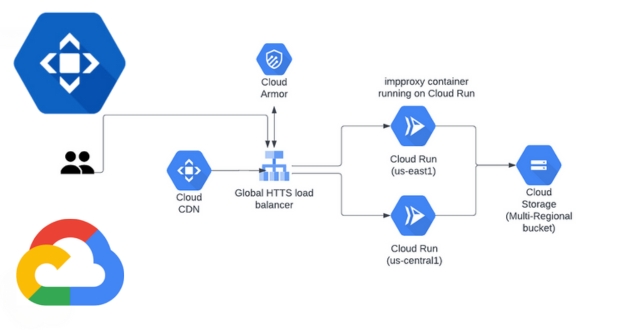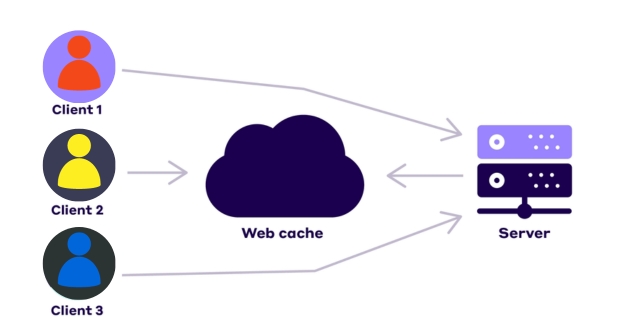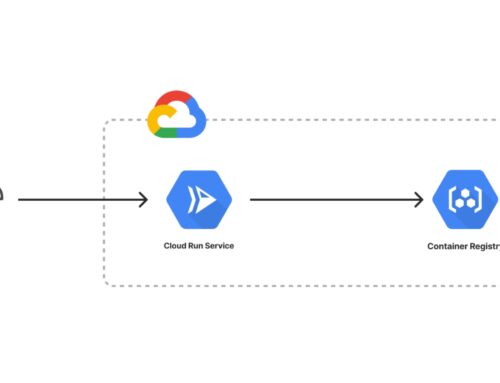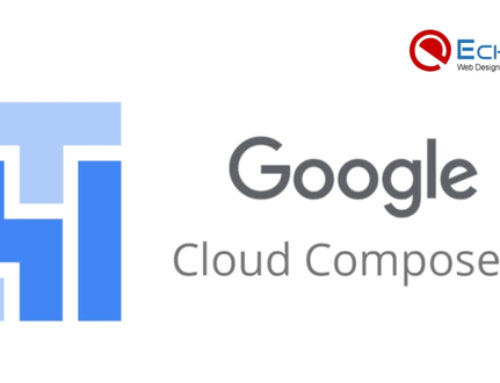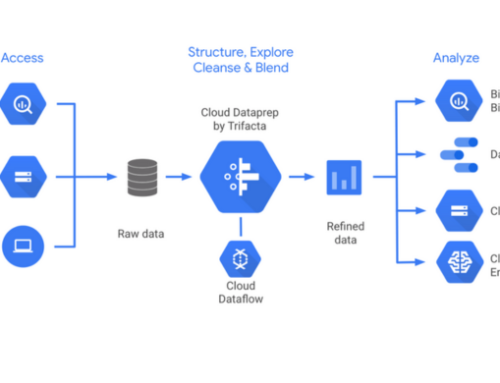Introduction to GCP Cloud CDN
Definition of Cloud CDN:
Google Cloud CDN (Content Delivery Network) is a powerful service offered by Google Cloud Platform (GCP) designed to enhance the performance, reliability, and security of content delivery for web applications and websites. At its core, Cloud CDN is a globally distributed network of strategically positioned servers that work together to efficiently deliver content to users, reducing latency and optimizing the overall user experience.
Overview of its Role in Content Delivery and Optimization:
Cloud CDN plays a pivotal role in optimizing content delivery by strategically caching and delivering static and dynamic content, such as images, videos, and web pages, from servers located at the edge of Google’s global infrastructure. This distributed approach ensures that users around the world experience faster load times and improved performance when accessing web applications or consuming digital content.
Significance of Fast and Secure Content Delivery in Modern Applications:
In the dynamic landscape of modern applications, user expectations for fast and seamless experiences are higher than ever. Cloud CDN addresses this demand by leveraging Google’s extensive global network infrastructure to accelerate content delivery. Beyond speed, it also enhances security by providing features like SSL/TLS encryption, protecting data in transit and ensuring a secure connection between users and applications. This not only improves user satisfaction but also contributes to the overall reliability and trustworthiness of applications.
Brief Mention of GCP’s Global Infrastructure and Network Capabilities:
Cloud CDN benefits from the robust global infrastructure of Google Cloud Platform. Google’s extensive network of data centers, connected through high-speed fiber optic cables, ensures that content can be efficiently distributed to users from the closest edge location. This global reach not only minimizes latency but also enables applications to scale effortlessly to meet user demands while maintaining a high level of availability and reliability.
In summary, GCP Cloud CDN is instrumental in providing a fast, reliable, and secure content delivery solution for modern applications. By leveraging Google’s global infrastructure, it addresses the challenges of latency and ensures that users worldwide experience optimal performance when interacting with web applications and consuming digital content.
Key Features of GCP Cloud CDN
Global Edge Locations:
One of the foundational features of GCP Cloud CDN is its extensive network of global edge locations. These strategically positioned servers are distributed across the world, bringing content closer to end-users. With Google’s widespread network infrastructure, Cloud CDN ensures low-latency access to cached content, resulting in faster load times and an improved user experience regardless of the user’s geographical location.
Caching and Content Delivery:
Cloud CDN optimizes content delivery through efficient caching mechanisms. Frequently requested content is cached at edge locations, reducing the need to fetch it from the origin server on subsequent requests. This not only accelerates content delivery but also minimizes the load on origin servers, contributing to overall system efficiency.
SSL/TLS Encryption:
Security is paramount in today’s digital landscape, and Cloud CDN addresses this through robust SSL/TLS encryption. By providing encrypted connections between users and the content delivery network, Cloud CDN ensures the confidentiality and integrity of data in transit. This feature is particularly critical for securing sensitive information, such as user credentials or financial transactions, as it mitigates the risk of eavesdropping and data tampering.
Anycast IP Addresses:
Anycast is a routing technique that enhances the reliability and efficiency of content delivery. Cloud CDN utilizes Anycast IP addresses, allowing multiple edge locations to share the same IP address. When a user makes a request, the network routes it to the nearest available edge location with that IP address. This minimizes latency and optimizes the path between the user and the content, resulting in faster response times.
Integration with Google’s Load Balancing Services:
Cloud CDN seamlessly integrates with Google’s Load Balancing services, enhancing its scalability and fault tolerance. Load balancing ensures that incoming traffic is distributed across multiple instances or servers, preventing overloading and improving the overall performance and availability of applications. Cloud CDN, when integrated with load balancing, optimizes the distribution of cached content, contributing to a scalable and reliable infrastructure.
HTTP/HTTPS Load Balancing:
Cloud CDN supports both HTTP and HTTPS load balancing, offering flexibility in catering to various application requirements. HTTP load balancing efficiently distributes non-encrypted traffic, while HTTPS load balancing adds an extra layer of security by encrypting data in transit. This adaptability makes Cloud CDN suitable for a wide range of applications, from traditional websites to secure e-commerce platforms.
In summary, the key features of GCP Cloud CDN, including its global edge locations, caching mechanisms, SSL/TLS encryption, Anycast IP addresses, and integration with load balancing services, collectively contribute to its ability to provide fast, secure, and reliable content delivery for modern applications. These features empower developers to optimize the performance and user experience of their applications on a global scale.
Benefits of Using GCP Cloud CDN
GCP Cloud CDN offers a myriad of benefits that significantly enhance the performance, reliability, and security of web applications. From improving website responsiveness to mitigating security threats, the advantages of leveraging Cloud CDN are substantial.
Improved Website Performance:
One of the primary benefits of using GCP Cloud CDN is the significant improvement in website performance. By strategically caching content at global edge locations, Cloud CDN ensures that users experience faster load times for static and dynamic content. This optimization leads to a smoother and more responsive user experience, contributing to higher user satisfaction and engagement.
Reduction in Latency:
Reducing latency is crucial for delivering content quickly to end-users. Cloud CDN achieves this by minimizing the physical distance between users and the servers through its global edge locations. With content stored closer to users, the round-trip time for data decreases, resulting in lower latency. This is particularly impactful for applications with a global user base, where even milliseconds can make a significant difference in user experience.
Bandwidth Cost Optimization:
Cloud CDN provides an effective solution for optimizing bandwidth costs. By caching and serving content from edge locations, it reduces the load on the origin server and minimizes the need for data to traverse the entire network. This not only accelerates content delivery but also results in cost savings by optimizing bandwidth usage, especially for large-scale applications with high data transfer requirements.
DDoS Protection:
Distributed Denial of Service (DDoS) attacks pose a significant threat to the availability of web applications. Cloud CDN includes robust DDoS protection mechanisms that help mitigate these attacks. By leveraging Google’s global infrastructure, Cloud CDN can distribute and absorb the impact of malicious traffic, ensuring that legitimate requests can still reach the application. This fortification enhances the resilience of web applications against DDoS attacks, maintaining consistent availability for users.
Enhanced Security with SSL/TLS Encryption:
Security is a paramount concern for web applications, especially when dealing with sensitive user data. Cloud CDN addresses this concern by providing SSL/TLS encryption for content delivery. This ensures that data transmitted between users and the content delivery network remains confidential and tamper-proof. The implementation of encryption protocols adds an extra layer of protection, securing communications and fostering trust among users.
Scalability for Handling Traffic Peaks:
Web applications often experience peaks in traffic, such as during product launches, promotions, or events. Cloud CDN’s integration with Google’s load balancing services ensures scalability to handle sudden spikes in traffic effectively. By distributing the load across multiple instances and optimizing content delivery, Cloud CDN enables applications to seamlessly scale to meet user demands without compromising performance or availability.
In conclusion, the benefits of using GCP Cloud CDN extend across various dimensions, from optimizing website performance and reducing latency to achieving bandwidth cost savings, providing DDoS protection, ensuring enhanced security through encryption, and enabling seamless scalability for handling traffic peaks. These advantages collectively position Cloud CDN as a critical component for organizations seeking to deliver fast, reliable, and secure web experiences to a global audience.
Setting Up GCP Cloud CDN
Setting up GCP Cloud CDN involves a series of steps to configure a robust and efficient content delivery infrastructure. From creating a GCP project to fine-tuning SSL/TLS settings, each step contributes to optimizing website performance and ensuring secure content delivery.
-
Prerequisites and Project Configuration
- Creating a GCP Project:
The first step in setting up Cloud CDN is to create a GCP project. This project serves as the organizational container for resources associated with Cloud CDN. Through the GCP Console, users can create a new project, specifying project details, including a unique project ID and name.
- Enabling the Cloud CDN API:
Once the project is created, the Cloud CDN API needs to be enabled. This API provides programmatic access to Cloud CDN functionalities. Enabling the API is done through the GCP Console or via the command line using the gcloud tool. Activating the Cloud CDN API grants the project the necessary permissions to leverage Cloud CDN features.
-
Configuring a Backend Service
- Setting Up an HTTP(S) Load Balancer:
To enable Cloud CDN, a backend service must be configured. This involves setting up an HTTP(S) Load Balancer, a critical component in distributing incoming traffic across backend instances. Users define the frontend configuration, specifying protocols, ports, and IP address types, while also configuring backend services and routes.
- Configuring Backend Instances:
Backend instances are the servers or resources that handle incoming requests. Users configure backend instances based on the needs of their applications. This step involves specifying the groups of instances that will handle traffic and defining health checks to ensure the availability and health of these instances.
- Defining Health Checks:
Health checks are vital for ensuring that traffic is directed to healthy instances. Users define health checks to periodically assess the state of backend instances. These checks verify if instances are responsive and capable of handling requests. If an instance fails a health check, the load balancer can route traffic away from that instance until it recovers.
-
Enabling Cloud CDN for a Load Balancer
- Associating a Load Balancer with a CDN:
Once the backend service is configured, Cloud CDN can be enabled for the load balancer. This involves associating the load balancer with Cloud CDN, allowing it to utilize the global edge locations for content delivery. Enabling Cloud CDN enhances the performance of the load-balanced application by caching content closer to end-users.
- Configuring Cache Settings:
Cloud CDN provides extensive cache settings to customize how content is cached and delivered. Users can define cache modes, expiration policies, and control which content is cached. Fine-tuning cache settings ensures optimal content delivery while balancing the trade-off between freshness and response times.
- Fine-tuning Origin Configuration:
Fine-tuning the origin configuration involves specifying how Cloud CDN interacts with the origin server. Users can configure settings such as request and response headers, origin protocols, and behaviors. These configurations allow Cloud CDN to communicate effectively with the origin server and optimize content delivery.
-
SSL/TLS Configuration
- Enabling SSL for Secure Communication:
Security is paramount, and Cloud CDN supports SSL/TLS encryption for secure communication. Users can enable SSL to encrypt data in transit between end-users and the content delivery network. Enabling SSL ensures that sensitive information remains confidential and secure during transmission.
- Configuring SSL Policies:
SSL policies define the cryptographic protocols and algorithms used for SSL/TLS connections. Users can configure SSL policies to align with security best practices and compliance requirements. This step allows organizations to customize the level of security for their applications.
- Utilizing Google-managed SSL Certificates:
Google-managed SSL certificates simplify the management of SSL certificates for users. By leveraging Google-managed certificates, users can automatically provision, renew, and manage SSL certificates without the need for manual intervention. This ensures that SSL certificates are always up-to-date and valid.
In conclusion, setting up GCP Cloud CDN involves a systematic configuration process, from creating a GCP project to fine-tuning SSL/TLS settings. This comprehensive setup ensures not only optimal content delivery and performance but also the security of data in transit. The integration of Cloud CDN with load balancing services provides organizations with a powerful solution for delivering fast, reliable, and secure web experiences to their users.
Cache Invalidation and Purging Strategies
Efficient cache management is crucial for ensuring that users receive the most up-to-date content. GCP Cloud CDN provides robust cache invalidation and purging strategies, allowing organizations to control when and how cached content is refreshed.
Overview of Cache Invalidation:
Cache invalidation is the process of removing or updating cached content to ensure that users receive the latest version of resources. Cloud CDN employs a sophisticated caching system, but there are scenarios where cached content needs to be invalidated to reflect changes in the origin server. This process is essential for maintaining the accuracy and relevance of the content delivered to end-users.
Configuring Cache Invalidation Rules:
Cloud CDN allows users to configure cache invalidation rules based on specific criteria. By defining rules, organizations can control which content should be invalidated and under what conditions. For example, a rule might be set to invalidate the cache for a particular URL or content type whenever changes are made to the origin server. These rules provide granular control over cache invalidation, ensuring that it aligns with the dynamic nature of web applications.
Manual Cache Purging:
In addition to rule-based cache invalidation, Cloud CDN offers manual cache purging options. This gives users the ability to manually purge specific content from the cache, overriding existing rules. Manual cache purging is useful in situations where immediate updates are required, such as during critical updates or in response to unexpected content changes. Through the GCP Console or API, users can initiate manual cache purges to ensure timely content refresh.
Automating Cache Invalidation with Google Cloud Pub/Sub:
To streamline cache invalidation and ensure timely updates, Cloud CDN supports automation through Google Cloud Pub/Sub. Organizations can set up Pub/Sub topics to trigger cache invalidation events based on changes in the origin server. When content changes occur, the origin server publishes a message to the Pub/Sub topic, signaling Cloud CDN to invalidate the corresponding cache. This automation simplifies the cache management process, allowing for real-time responsiveness to changes in the content.
Automated cache invalidation with Pub/Sub is particularly beneficial in dynamic environments where content changes frequently. It reduces the manual effort required to manage cache freshness and ensures that users consistently receive the latest content without delays. This integration enhances the agility of web applications, allowing organizations to maintain a balance between performance optimization and content accuracy.
In summary, cache invalidation and purging strategies in GCP Cloud CDN provide organizations with flexible and automated mechanisms to control the freshness of cached content. By configuring rules, initiating manual cache purges, and leveraging Pub/Sub for automation, organizations can ensure that users always access the most up-to-date content while optimizing the overall performance and efficiency of their web applications.
Advanced Configuration Options
GCP Cloud CDN provides advanced configuration options that empower organizations to fine-tune the behavior of the content delivery network. These options go beyond the basics, allowing for customization based on specific requirements and use cases.
-
Header Manipulation
- Modifying Request and Response Headers:
Cloud CDN offers the capability to manipulate both request and response headers during the content delivery process. This includes modifying HTTP headers to control how content is cached, delivered, and processed. For example, organizations can add or remove certain headers, alter cache-control directives, or customize response headers to enhance security or meet application-specific requirements.
- Use Cases for Header Manipulation:
Header manipulation opens the door to various use cases. Organizations can use this feature to control caching policies, customize the behavior of web applications, or enhance security. For instance, adding security-related headers can bolster protection against common web vulnerabilities, while modifying caching headers can influence how content is stored and delivered to end-users.
-
Bypassing Cache for Specific URLs
- Configuring Cache Bypass Rules:
In some scenarios, organizations may want to bypass the cache for specific URLs, ensuring that content is always fetched directly from the origin server. Cloud CDN allows users to configure cache bypass rules, specifying which URLs should be exempted from caching. This flexibility is valuable for content that requires real-time updates or for specific resources that should always be fetched directly.
- Use Cases for Bypassing Cache:
Bypassing the cache becomes crucial in situations where dynamic or frequently changing content should not be served from the cache. Streaming content, user-specific data, or real-time updates are examples where bypassing the cache ensures that users receive the latest information without delays. By configuring cache bypass rules, organizations can tailor the caching strategy to the specific needs of their applications.
-
Log Analysis and Monitoring
- Utilizing Cloud CDN Logs:
Cloud CDN generates logs that capture valuable information about requests, responses, and cache behavior. These logs offer insights into how the CDN is performing, which can be instrumental for troubleshooting, performance optimization, and security analysis. Cloud CDN logs provide detailed information, including client IP addresses, cache hit or miss status, and response times.
- Integrating with Stackdriver for Monitoring and Analysis:
To enhance monitoring and analysis capabilities, Cloud CDN seamlessly integrates with Google Cloud’s observability platform, Stackdriver. By integrating Cloud CDN logs with Stackdriver Logging and Monitoring, organizations gain real-time visibility into the performance and behavior of their CDN. This integration facilitates proactive monitoring, alerting, and in-depth analysis, empowering organizations to make data-driven decisions.
Advanced configuration options in GCP Cloud CDN, such as header manipulation, cache bypass rules, and integrated log analysis with Stackdriver, provide organizations with the tools needed to tailor the CDN to their specific needs. These options enable fine-grained control over content delivery, ensuring that organizations can optimize performance, enhance security, and meet the unique requirements of their web applications.
Performance Optimization Techniques
GCP Cloud CDN not only accelerates content delivery but also offers performance optimization techniques that leverage its global infrastructure and strategic features.
- Leveraging Anycast IP Addresses:
Cloud CDN utilizes Anycast IP addresses, a routing technique that directs user requests to the nearest available edge location. This not only reduces latency by minimizing the physical distance between users and servers but also ensures that requests are efficiently distributed. Leveraging Anycast IP addresses enhances the responsiveness of web applications, contributing to an improved user experience.
- Utilizing Google’s Global Network Infrastructure:
One of the key advantages of Cloud CDN is its integration with Google’s global network infrastructure. Google’s extensive network of data centers connected by high-speed fiber optic cables ensures that content is delivered efficiently and reliably. By utilizing this global network, Cloud CDN minimizes the time it takes for data to traverse the network, optimizing the overall performance of web applications for users worldwide.
Image and Resource Optimization Best Practices:
Optimizing the delivery of images and other resources is critical for enhancing performance. Cloud CDN supports best practices for image and resource optimization, including compression, resizing, and efficient caching. By implementing these techniques, organizations can reduce the size of assets transmitted over the network, leading to faster load times and improved page performance.
Impact of GCP’s Edge Locations on Performance:
The strategic placement of edge locations plays a crucial role in performance optimization. Cloud CDN’s global network includes a distributed set of edge locations strategically positioned around the world. This placement ensures that content is cached closer to end-users, reducing the time it takes to fetch and deliver content. The impact of GCP’s edge locations on performance is profound, as it enables organizations to provide low-latency experiences to users, regardless of their geographical location.
Performance optimization in Cloud CDN goes beyond just accelerating content delivery. It leverages Anycast IP addresses for efficient routing, utilizes Google’s global network infrastructure to ensure reliable and fast data transmission, promotes image and resource optimization best practices for reducing payload sizes, and strategically positions edge locations for low-latency content access. By incorporating these techniques, organizations can create a highly performant and responsive user experience for their web applications on a global scale.
Cost Considerations and Pricing Model
Understanding the cost considerations and pricing model of GCP Cloud CDN is essential for organizations seeking to balance performance enhancements with budgetary constraints.
Overview of Cloud CDN Pricing:
Cloud CDN pricing is based on several factors, including the volume of data transferred, cache egress (data served from the cache), and cache fill (data fetched from the origin server). Additionally, costs may vary based on the geographic location of end-users and the edge locations serving the content. Google Cloud adopts a pay-as-you-go pricing model, allowing organizations to pay for the specific resources and services they consume without upfront commitments.
Factors Affecting Costs:
Several factors influence the costs associated with Cloud CDN usage:
- Data Transfer Volume: The amount of data transferred between Cloud CDN and end-users affects costs. Higher data transfer volumes may lead to increased expenses.
- Cache Fill: Costs are influenced by the frequency at which content needs to be fetched from the origin server to fulfill user requests. More frequent cache fills may result in higher expenses.
- Geographic Distribution: The geographic distribution of end-users impacts costs, as data transfer costs can vary based on the location of edge locations serving the content.
Strategies for Cost Optimization:
To optimize costs while leveraging the benefits of Cloud CDN, organizations can consider the following strategies:
- Caching Efficiency: Fine-tune caching settings to optimize cache hit rates and reduce the need for frequent origin fetches. Efficient caching ensures that content is served from the cache whenever possible, minimizing data transfer costs.
- Content Delivery Strategy: Consider the nature of the application and user traffic to determine the most effective content delivery strategy. For example, static assets may benefit from longer cache durations, reducing the need for frequent origin fetches.
- Geographic Distribution: Evaluate the distribution of end-users and strategically configure Cloud CDN to leverage edge locations that minimize data transfer costs. This may involve adjusting the distribution of cached content based on user locations.
- Monitoring and Analytics: Regularly monitor Cloud CDN usage patterns and analyze performance metrics. Insights gained from monitoring can inform adjustments to caching strategies, helping to optimize costs without compromising performance.
By adopting a proactive approach to cost management and leveraging the flexibility of Cloud CDN’s pricing model, organizations can strike a balance between delivering high-performance content and optimizing operational expenses. Regular evaluation and adjustment of caching strategies based on usage patterns and user distribution contribute to effective cost optimization in Cloud CDN usage.
Future Developments and Updates
Google Cloud remains committed to the continuous improvement of its services, including Cloud CDN. The commitment to innovation is evident in the ongoing efforts to enhance performance, security, and functionality.
Google Cloud’s Commitment to Continuous Improvement:
Google Cloud is dedicated to delivering cutting-edge solutions that meet the evolving needs of its users. This commitment extends to Cloud CDN, with a focus on providing a reliable and high-performance content delivery network that aligns with industry standards and best practices.
Potential Enhancements and Features on the Horizon:
The future developments and updates for Cloud CDN may include enhancements to caching strategies, optimizations for specific use cases, and the introduction of new features to further streamline content delivery. Google Cloud often integrates feedback from users to identify areas for improvement and to prioritize features that align with the evolving landscape of web applications.
Community Feedback and Contributions:
Google Cloud values the input of its user community, actively seeking feedback and contributions to refine and expand its services. Community engagement plays a pivotal role in shaping the future of Cloud CDN. User feedback helps identify real-world challenges and opportunities, guiding the development of features and improvements that resonate with the diverse needs of the user base.


